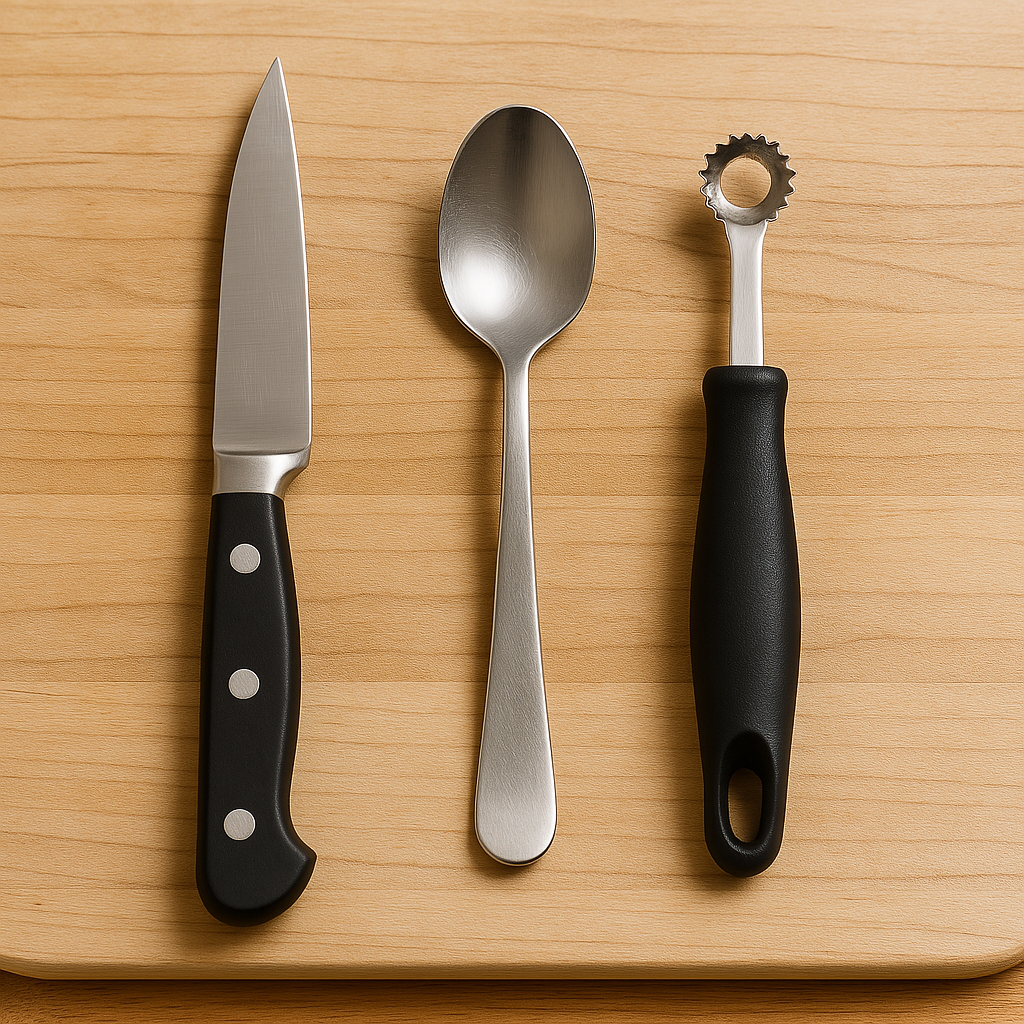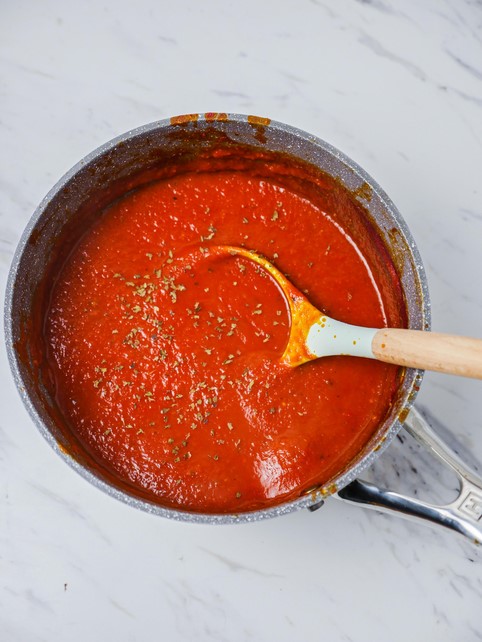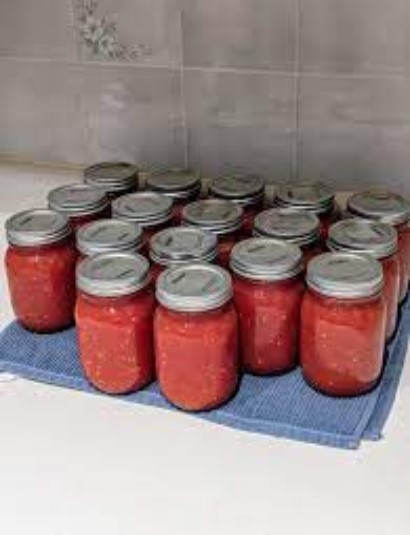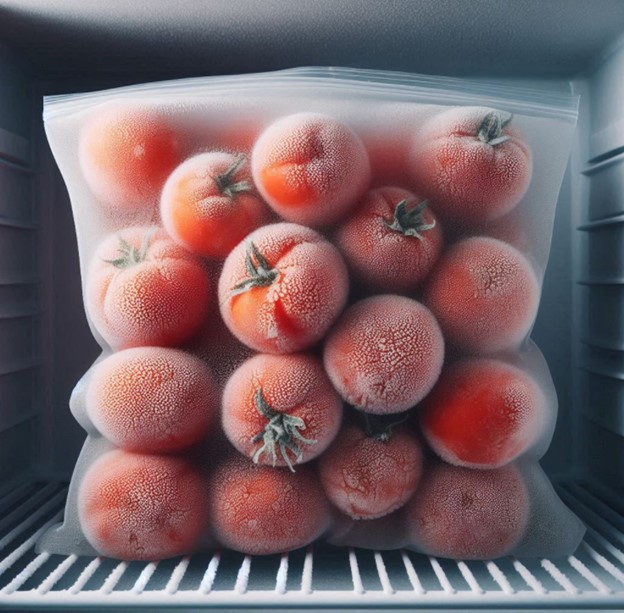Tomatoes are one of the most versatile and beloved ingredients in the kitchen. Whether you’re making pasta sauce, salsa, stew, or canning a harvest from your backyard, preparing your tomatoes properly is key to getting the best flavor and texture.
One important but often overlooked step in tomato prep is coring—removing the hard, fibrous stem and inner core before cooking or processing.
While coring a tomato might seem simple, doing it correctly and efficiently can make a big difference in your recipes. In this guide, we’ll walk you through exactly how to core tomatoes, why it matters, and when you should (or shouldn’t) do it. By the end, you’ll know how to handle any tomato with confidence, whether it’s a firm Roma or a juicy beefsteak.
️What Does “Coring a Tomato” Mean?

Coring a tomato means removing the stem area and the small cone-shaped core inside the fruit. This area is usually tough, fibrous, and bland in flavor, which makes it undesirable in most cooked dishes or smooth purées. The core can also be a choking hazard if not properly broken down during cooking.
Coring is most often done when:
- Making tomato sauce
- Canning whole or diced tomatoes
- Preparing tomatoes for soup or stew
- Freezing or roasting tomatoes in bulk
Tools You’ll Need To Core Tomatoes

You don’t need fancy equipment to core tomatoes—just a few basics:
- Sharp paring knife or tomato corer
- Cutting board
- Spoon (optional)
- A tomato corer (a small, serrated scooping tool) is great if you’re processing many tomatoes at once. For smaller batches, a paring knife works perfectly.
Step-by-Step: How to Core Tomatoes

Here’s how to properly core a tomato using a paring knife:
- Wash the Tomato
Rinse the tomato under cool water to remove any dirt or pesticides. Pat it dry with a clean towel. - Remove the Stem
If your tomato still has the green stem attached, gently pull it off with your fingers. This will reveal the circular stem scar on top, which is your target area. - Position the Tomato
Place the tomato stem-side up on a cutting board. Stabilize it with your non-dominant hand so it doesn’t roll around. - Cut Around the Core
Using a sharp paring knife, insert the tip of the blade at an angle just outside the stem scar. You want to aim the knife inward at about a 45-degree angle.
Cut in a circular motion around the stem scar.
The goal is to form a shallow cone that includes the white, tough core inside.
Don’t go too deep—just enough to remove the fibrous part without wasting good tomato flesh.
- Remove the Core
Once you’ve completed the ci rcular cut, gently pop out the core using the knife tip or your fingers. It should come out in one piece. - Check the Inside
Look inside the tomato. If you see any remaining tough white material, trim it away carefully.
And that’s it—you’ve successfully cored your tomato!
If your recipe also calls for peeling tomatoes, you can core them before or after the blanching process.
Before blanching can be great for canning or freezing. Core, score, and then blanch.
After peeling can be useful if the tomatoes are very soft or overripe. The skin comes off easily, and the core is easier to remove with less juice loss.
There’s no wrong way—it depends on your workflow.
Pro Tips for Better Tomato Coring
- Use a serrated corer if coring a large number of tomatoes—it’s fast and efficient.
- Choose ripe but firm tomatoes—overripe ones are harder to handle and more likely to fall apart.
- Chill tomatoes briefly if they’re too soft—this firms them up for easier handling.
- Don’t overcut—you want to preserve as much flesh as possible.
- Save scraps—tomato cores and skins can be used for homemade vegetable stock or composted.
When You Should Core Tomatoes
Coring is most useful when you want a clean, consistent tomato texture. Some common scenarios include:
Making Tomato Sauce

The core can interfere with smooth blending and alter the texture. For the best result, core and peel your tomatoes first.
Canning Tomatoes

When canning whole or diced tomatoes, removing the core ensures a better shelf-stable product and avoids tough bits.
Roasting Tomatoes

Coring helps them cook more evenly and makes it easier to remove seeds later, if desired.
Freezing Tomatoes

If you plan to freeze tomatoes whole, core them first for convenience when thawing and cooking later.
When You Don’t Need to Core Tomatoes

Not every tomato dish needs cored fruit. Here are a few examples where coring is unnecessary:
- Raw dishes like salads or bruschetta
- Rough-chopped salsa where texture isn’t critical
- Juicing, where cores will be strained out anyway
- If you’re not bothered by the occasional bit of tough core in your dish, you can skip it.
Cleaning Up & Safety
Coring can get juicy! Keep your workspace clean with:
- A non-slip cutting board
- A paper towel or rag nearby
- A bowl for scraps (to make composting or cleanup easy)
- Also, always use a sharp knife. A dull blade is more dangerous than a sharp one because it requires more force and is more likely to slip.
Final Thoughts
Coring tomatoes is one of those small, simple prep tasks that can make a big impact. While it’s not required for every dish, taking the time to remove the tough, fibrous center ensures a smoother texture, better flavor distribution, and a more professional finish to your recipes.
Whether you’re batch-canning your summer harvest, simmering Sunday sauce, or prepping roasted tomatoes for freezing, coring is a great technique to have in your kitchen toolkit. With just a paring knife and a few seconds per tomato, you’ll be well on your way to mastering tomato prep like a pro.
Leave a Reply